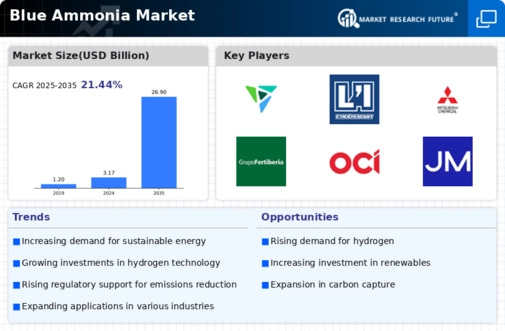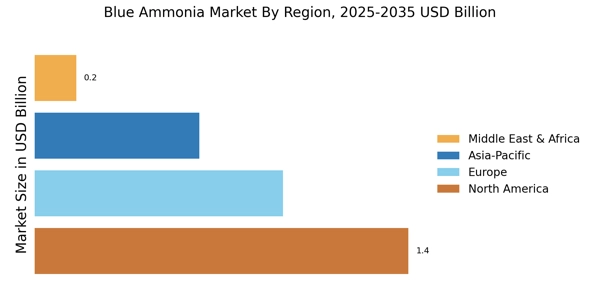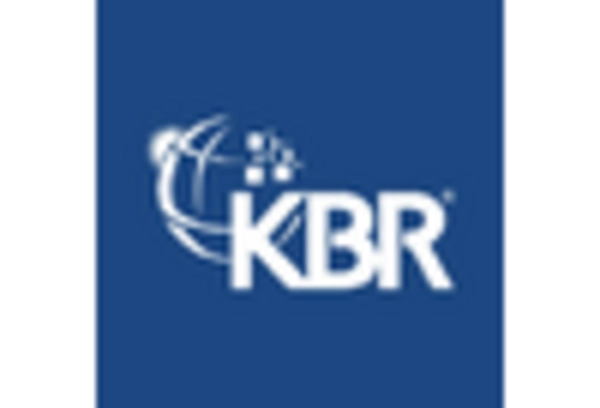Growing Applications in Agriculture
The Blue Ammonia Market is witnessing a growing demand for blue ammonia in agricultural applications. As a nitrogen source, blue ammonia is increasingly recognized for its potential to enhance crop yields while minimizing environmental impact. The agricultural sector is under pressure to adopt sustainable practices, and blue ammonia offers a solution that aligns with these goals. The market for nitrogen fertilizers is projected to reach 200 billion USD by 2025, with blue ammonia playing a pivotal role in this growth. This trend not only supports food security but also contributes to the overall sustainability of agricultural practices.
Regulatory Support for Clean Energy
The Blue Ammonia Market is experiencing a surge in regulatory support aimed at promoting clean energy solutions. Governments are increasingly implementing policies that incentivize the production and use of low-carbon fuels, including blue ammonia. For instance, various countries have set ambitious targets for reducing greenhouse gas emissions, which has led to a favorable environment for blue ammonia production. The International Energy Agency indicates that the demand for hydrogen, a key component in blue ammonia production, is expected to reach 500 million tons by 2030. This regulatory landscape not only encourages investment in blue ammonia technologies but also fosters innovation, thereby enhancing the overall market dynamics.
Rising Interest in Hydrogen Economy
The Blue Ammonia Market is poised for growth due to the rising interest in the hydrogen economy. Blue ammonia serves as a viable hydrogen carrier, facilitating the transportation and storage of hydrogen in a more efficient manner. As industries seek to decarbonize, the demand for hydrogen is projected to increase significantly. According to recent estimates, the hydrogen market could reach a valuation of 200 billion USD by 2030. This burgeoning interest in hydrogen applications, particularly in sectors such as transportation and power generation, is likely to bolster the blue ammonia market, as it provides a practical solution for hydrogen distribution.
Investment in Carbon Capture Technologies
The Blue Ammonia Market is benefiting from increased investment in carbon capture and storage (CCS) technologies. These technologies are essential for reducing the carbon footprint associated with ammonia production. As companies strive to meet sustainability goals, the integration of CCS in blue ammonia production processes is becoming more prevalent. Reports suggest that The Blue Ammonia Market could exceed 10 billion USD by 2025, indicating a robust growth trajectory. This investment not only enhances the environmental credentials of blue ammonia but also positions it as a competitive alternative in the energy market, appealing to environmentally conscious consumers and businesses.
Technological Innovations in Production Processes
The Blue Ammonia Market is being driven by technological innovations in production processes. Advances in catalytic processes and energy efficiency are making blue ammonia production more economically viable. New methods, such as the use of renewable energy sources for hydrogen production, are being explored to reduce costs and enhance sustainability. The market for ammonia production technologies is expected to grow significantly, with estimates suggesting a compound annual growth rate of 5% over the next decade. These innovations not only improve the competitiveness of blue ammonia but also align with the broader shift towards sustainable energy solutions.


















Leave a Comment